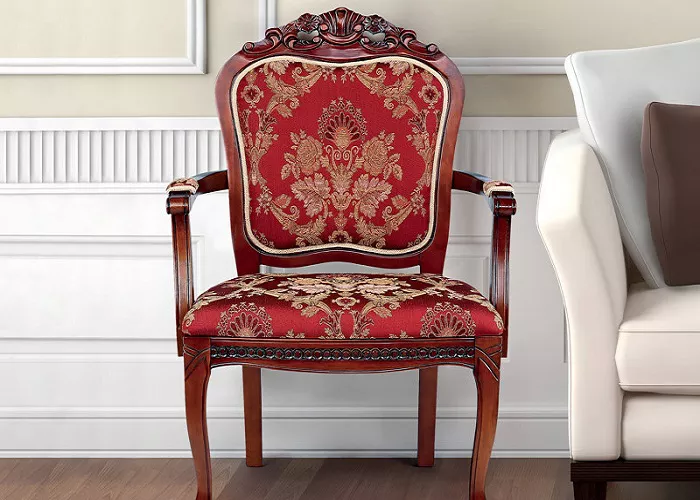Among the myriad of antique furnishings, the red antique chair stands out as a symbol of opulence, history, and craftsmanship. Its vivid hue, combined with intricate designs and rich materials, captures the essence of various historical periods and styles. This article delves into the fascinating world of red antique chairs, exploring their origins, styles, cultural significance, and enduring appeal.
Historical Origins of Red Antique Chairs
The use of red in furniture dates back centuries, often associated with wealth and power. In ancient times, red dyes were expensive and labor-intensive to produce, making red textiles a luxury reserved for the elite. As furniture design evolved, red became a favored color for upholstering chairs, symbolizing status and sophistication.
European Influence
In Europe, particularly during the Renaissance and Baroque periods, red velvet chairs became prominent in royal courts and aristocratic homes. The rich texture of velvet combined with the deep red color exuded luxury. French designs, such as the Louis XV and Louis XVI styles, often featured red upholstery paired with ornate carvings and gilded frames.
American Adaptations
Across the Atlantic, American furniture makers drew inspiration from European designs. The Windsor chair, for instance, became popular in colonial America. While traditionally painted in various colors, some versions featured red finishes, aligning with the era’s aesthetic preferences.
Distinctive Styles of Red Antique Chairs
Red antique chairs encompass a variety of styles, each reflecting the design sensibilities of its time.
Victorian Elegance
The Victorian era introduced chairs with elaborate carvings, tufted red velvet upholstery, and dark wood frames. These chairs often featured high backs and intricate details, embodying the period’s penchant for grandeur.
Queen Anne Grace
Characterized by cabriole legs and curved lines, Queen Anne chairs offered a more refined elegance. Red upholstery added a touch of warmth and richness to these graceful designs.
Chippendale Craftsmanship
Chippendale chairs, known for their intricate carvings and sturdy construction, often featured red leather or fabric seats. The combination of bold design and vibrant color made them a centerpiece in many homes.
French Rococo Flair
French Rococo chairs, with their ornate frames and luxurious red fabrics, epitomized the opulence of 18th-century France. The use of red in these designs highlighted the era’s love for drama and extravagance.
Materials and Craftsmanship
The allure of red antique chairs is not solely in their design but also in the materials and craftsmanship involved.
Upholstery
Red velvet, damask, and brocade were commonly used fabrics, chosen for their rich texture and deep hues. These materials not only provided comfort but also signified luxury.
Woodwork
Mahogany, walnut, and oak were popular choices for frames, offering durability and a beautiful contrast to red upholstery. Skilled artisans carved intricate patterns, showcasing their craftsmanship.
Cultural Significance of Red in Furniture
Red has long been associated with power, passion, and prosperity. In furniture, red chairs often occupied prominent spaces, signaling importance. In Chinese culture, red symbolizes good fortune, making red chairs auspicious additions to homes.
Collecting and Valuing Red Antique Chairs
For collectors, red antique chairs are prized for their beauty and historical value. Factors influencing their worth include:
- Authenticity: Original pieces with minimal restoration are more valuable.
- Condition: Well-preserved upholstery and sturdy frames fetch higher prices.
- Provenance: Chairs with documented history or association with notable figures are especially sought after.
Understanding the value of antique chairs is crucial for both buyers and sellers in the antique market.
Integrating Red Antique Chairs in Modern Interiors
While rooted in history, red antique chairs can seamlessly blend into contemporary spaces. Here are some tips:
Statement Pieces
Use a red antique chair as a focal point in a minimalist room. Its bold color and design can add character without overwhelming the space.
Eclectic Mix
Combine red antique chairs with modern furniture to create an eclectic look. The juxtaposition of old and new adds depth and interest.
Color Coordination
Pair red chairs with complementary colors like gold, cream, or navy to create a cohesive palette. This enhances the chair’s presence while maintaining harmony.
Preservation and Care
Maintaining the beauty of red antique chairs requires careful attention:
- Regular Cleaning: Gently vacuum upholstery and dust wooden frames to prevent buildup.
- Avoid Direct Sunlight: Prolonged exposure can fade fabrics and damage wood.
- Climate Control: Maintain stable humidity levels to prevent wood from cracking or warping.
Conclusion
Red antique chairs are more than just seating; they are pieces of history, art, and culture. Their enduring appeal lies in their ability to convey elegance, craftsmanship, and a rich narrative. Whether as collector’s items or statement pieces in modern homes, these chairs continue to captivate and inspire.
For those interested in exploring various types and styles of antique chairs, understanding their historical context and design nuances can enrich appreciation and guide informed acquisitions.

